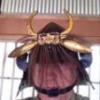-
Posts
14,092 -
Joined
-
Last visited
-
Days Won
261

Bugyotsuji replied to jason_mazzy's topic in Auctions and Online Sales or Sellers

Bugyotsuji replied to jason_mazzy's topic in Auctions and Online Sales or Sellers

Bugyotsuji replied to Bugyotsuji's topic in General Nihonto Related Discussion

Bugyotsuji replied to watsonmil's topic in Tanegashima / Teppo / Hinawajū

Bugyotsuji replied to Bugyotsuji's topic in General Nihonto Related Discussion

Bugyotsuji replied to Bugyotsuji's topic in General Nihonto Related Discussion

Bugyotsuji replied to Bugyotsuji's topic in General Nihonto Related Discussion

Bugyotsuji replied to Bugyotsuji's topic in General Nihonto Related Discussion

Bugyotsuji replied to Bugyotsuji's topic in General Nihonto Related Discussion

Bugyotsuji replied to Bugyotsuji's topic in General Nihonto Related Discussion

Bugyotsuji replied to watsonmil's topic in Tanegashima / Teppo / Hinawajū

Bugyotsuji replied to Bugyotsuji's topic in General Nihonto Related Discussion

